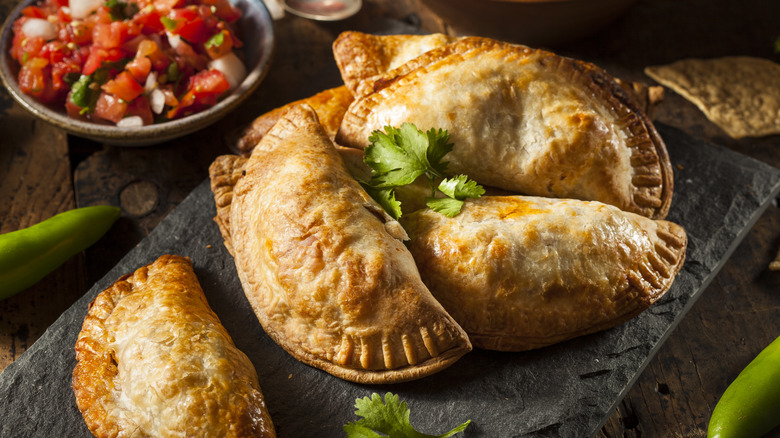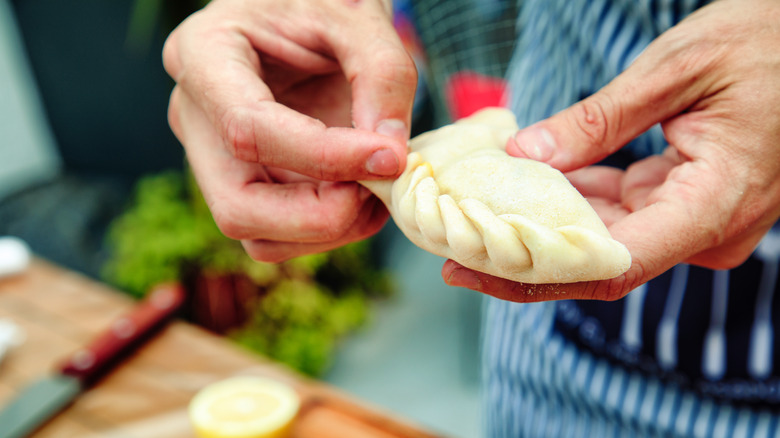The Right Way To Close Empanadas According To A Pro
Empanadas are the perfect way to showcase your favorite filling, wrapping it in a golden, buttery dough. Spinach and cheese, chorizo, chicken, or mixed vegetable — whatever your preference, you'll want to make sure it actually stays inside its edible shell. Making empanadas can be an intensive process; after prepping and rolling the dough, and cooking the filling, the last thing you want is for the insides to pop out while cooking. The key to ensuring all your hard work doesn't go to waste is closing the empanada like a pro.
To understand how professional chefs do it, Chowhound asked Jose Horrach, executive chef at Chica & The Don in New York City. The Latin American restaurant serves up empanadas with flavors like herb-marinated chicken, spinach and cheese, birria, and lobster, so they certainly know what they're doing in this realm. To keep them closed, empanadas need something that acts like a glue along the edge of the pastry. "Make sure you lightly dampen the edges, whether with water or egg wash. This creates an adhesive and seals it properly," Horrach recommends.
An egg wash typically consists of one egg mixed with about 3 tablespoons of water. This is spread on the inside of the dough, along the edges before its folded over. After folding and sealing the empanada, the egg wash can be brushed over the top of the pastry to add a shiny finish. Water is the simplest egg-free version for sealing the pastry. However, for another vegan-friendly egg wash alternative, you can use plant-based butter or oil to achieve that same glossy look.
Closing empanadas with a fork or braid
After sealing the pastry with egg wash or water, the last step is to press, pinch, or twist the edge of the dough shut, effectively sealing the filling side. A popular — and easy — way to close an empanada is by crimping the edges with a fork. This method works by pressing the fork prongs along the edge of the empanada to ensure there are no gaps or openings along the empanada.
However, there is another method, which chef Jose Horrach uses. "I prefer using the braiding method to seal as opposed to pressing the edges with a fork, as it creates a tighter seal," he says. The braid method looks restaurant-quality and, although it sounds more time-intensive, is also relatively simple. Instead of using a fork, you pinch the edges of the dough outwards with your fingers, then fold over and inwards toward the center of the pastry.
The braiding method reinforces the edges better, making it more difficult for the filling to bubble out. Besides the functionality, it's considered to be the more advanced and traditional technique. Calzones, Italian-style turnover pastries, are also commonly sealed with the braiding technique.

